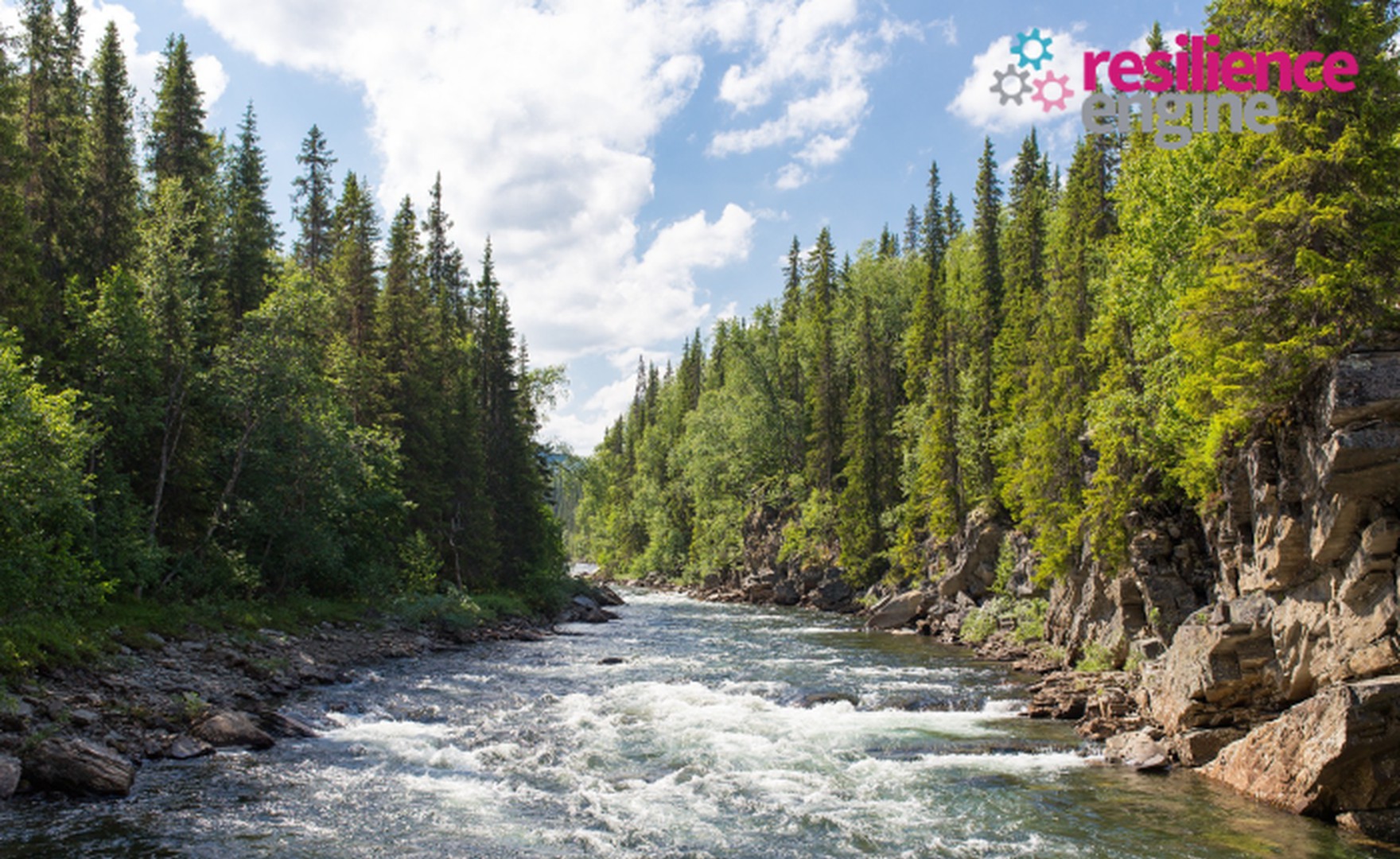Find out more about the Resilience Accreditation Programme.

The impact of the coronavirus on the population’s mental health is already evident. Whilst it’s a very mixed picture, indeed some people have genuinely thrived in this period, the overall picture is worrying. Our mental health is deteriorating. More so, psychologists in the caring professions are talking about the expected ‘ tsunami of mental health issues’.
In The Resilience Engine’s terms, using The Resilience Dynamic®1 , we are in the resilience area of ‘Fragmentation’ where people are no longer Coping. Depression and anxiety lie directly in Fragmentation, as does Burnout. It is a state where the individual loses sight of things in a significant way; they are overwhelmed, overtaken with the consequences of what is both an acute and chronic negative stress reaction. In deep Fragmentation such as this, the individual often will not realise how they are behaving; they won’t feel themselves but they will not be aware of how much of a resilience gap there is between the demands upon them versus their resilience potential in that moment. This resilience gap needs initially to be filled with direct support, through a friend, a listener, a counsellor, or a coach.
The first step is often helping the individual notice. Then it’s about helping them accept that they are not coping. Whilst once that bridge has been crossed there is great relief, getting to the bridge can be difficult. Initially there is often resistance because of the sense of shame of not coping. There is deep identity involved. It is necessary to ‘be with’ with care and compassion, in order to support the person to just ‘be’. Listening is the starting point.
Not everyone in Fragmentation needs someone to fill the resilience gap; however, they may be enabled to do this for themselves. Anyone can find themselves temporarily in Fragmentation, due to context. A sudden major issue, a difficult health situation, a loss. Or over the long-term, a wearing down of energy which can lead to a temporary burnout. If an individual is fluctuating between Coping – not Coping, the situation is quite different. Whilst the instability itself is difficult to manage, shame may still exist, and there is still the hijack of the negative stress reaction on the body, such as loss of sleep, illness and fatigue, the resilience potential of the individual is higher. All of these reactions does not render the individual entirely hijacked. That doesn’t mean they don’t need support, but it does mean that can be change and movement, and the work alongside them will be less intense.
As coaches, leaders and/or parents, how can you spot the difference? And what do you do?
First things first. The number one rule of helping, always, is put your own mask on first. You are not useful to anyone if you too get overwhelmed; indeed, it is unethical to get into coaching in this space unless you have sufficient resilience yourself. In this time during covid, you can therefore learn about supporting others by learning what supports you.
The first step is to foster a deep awareness of your own resilience levels. The second step is to proactively invest in the two most safe resilience-enablers, Being Present and Energy2.
You easiest way to do this, for yourselves and your clients, is to adopt as a daily check-in, with your Resilience River©:
- Your resilience is like a river
- The river is full of rocks, stones, pebbles, silt.
- It has a direction of travel.
- The banks and the land define what the river is like, whether wide and flowing gently, or narrow and flowing fast.
- There are rocks, stones, and pebble in the river. All things you have to carry or navigate around or shift.
- No matter the river, if the water is high enough, it whooshes over the rocks. The river stays on course. You can see where it’s going, you have perspective.
- When the river is low, the river bangs in the rocks, losing a lot of energy in the process. It can be taken off course. It can get caught eddying. It can get split. Rocks, stones, and pebbles are now out of perspective, they all seem huge. This is the moment you can get hijacked by unnecessary rocks.
- Your resilience, the height of your river, defines so much how you see and experience things.
- The key to ensuring you have sufficient resilience to meet the demands of your day, invest in the height of your river. What can you do to raise the river today?
If you would like to experience more about your Resilience River, and indeed how to use it with clients or your teams, see this video of the Resilience River© here: https://youtu.be/NHntpLfqY0I.
If you want to know more about the Resilience Engine research and how to apply it, we have set the kindle price for The Resilience Dynamic® book during Covid as 0.99 worldwide: mybook.to/Resilience-Dynamic
References
- From The Resilience Engine® research model. http://www.resiliencengine.com/research-method/
- The resilience enablers of Being Present and Energy have been found in the Resilience Engine to be the baseline enablers of resilience no matter the level. See The Resilience Engine research: http://www.resiliencengine.com/research-method/
Interview
Practitioner Diploma / “I wanted to extend my professional network outside of the education sector”
22nd April 2024 by Lee Robertson
Sam Jayasuriya is an accredited PCC coach and Somatic coach endorsed by the ICF and a certified mBit Coach, NLP…
Article
The Resilience Fundamentals: Excerpt from The Resilience Dynamic®
23rd January 2024 by Jenny Campbell
The fundamentals of resilience are not simplistic, but they are simple and deep. The Resilience Engine research shows three Top…
Article
Why personal resilience matters as a coach
17th December 2023 by Jenny Campbell
As an external or internal coach, does your personal resilience matter to your clients? Maybe you think it shouldn’t, especially…